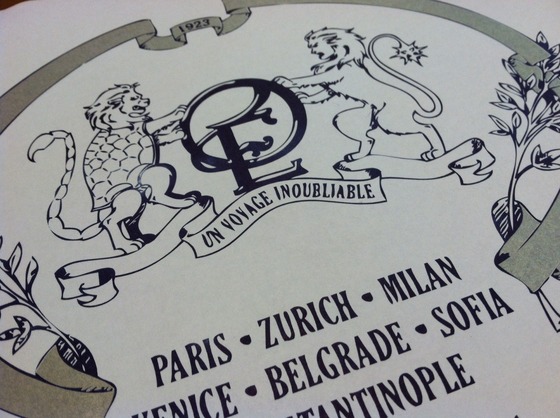
Horror on the Orient Express placemat [Source: Chaosium]
According to my handy Dictionary of Fabulous Beasts (Walker & Co. 1971) the tarasque lived on the banks of the Rhone near the town of Tarascon. It was “bigger than an ox…with a lion’s head and mouth; its jaws contained vast teeth, it had six bear’s paws, a carapace studied with spikes and a viper’s tail.” The redoubtable St Martha, yet another Biblical figure who somehow found her way to Europe, tamed it by drenching it with holy water.
In case the description is not vivid enough a delightful Tarascon statue gives a presumably authentic view of the monster, given that it is located near St Martha’s tomb. To my eye, it looks a little worried. We can assume that the statue depicts the moment after St Martha tamed it when the monster noticed the approach of the good townsfolk of Tarascon, who failed to trust in its wholehearted conversion and stoned it to death.

Tarasque statue [Source: Tarascon website]
The manticore has an interesting lineage, born in Persia and making its way by rumor to Europe. My Dictionary quotes Aristotle, quoting Ctesias (Alexander the Great’s personal physician, whose works are now lost): “the Indian wild beast called the ‘marticoras’ has a triple row of teeth in both upper and lower jaw; that it is as big as a lion and equally hairy, and that its feet resemble those of the lion; that it resembles man in its face and ears; that its eyes are blue, and its color vermilion; and has the faculty of shooting off arrow-wise the spines that are attached to its tail.” The same source notes that it can run as swiftly as a deer, no bad image for train. It is thought to born of garbled travelers’ tales of tigers.

